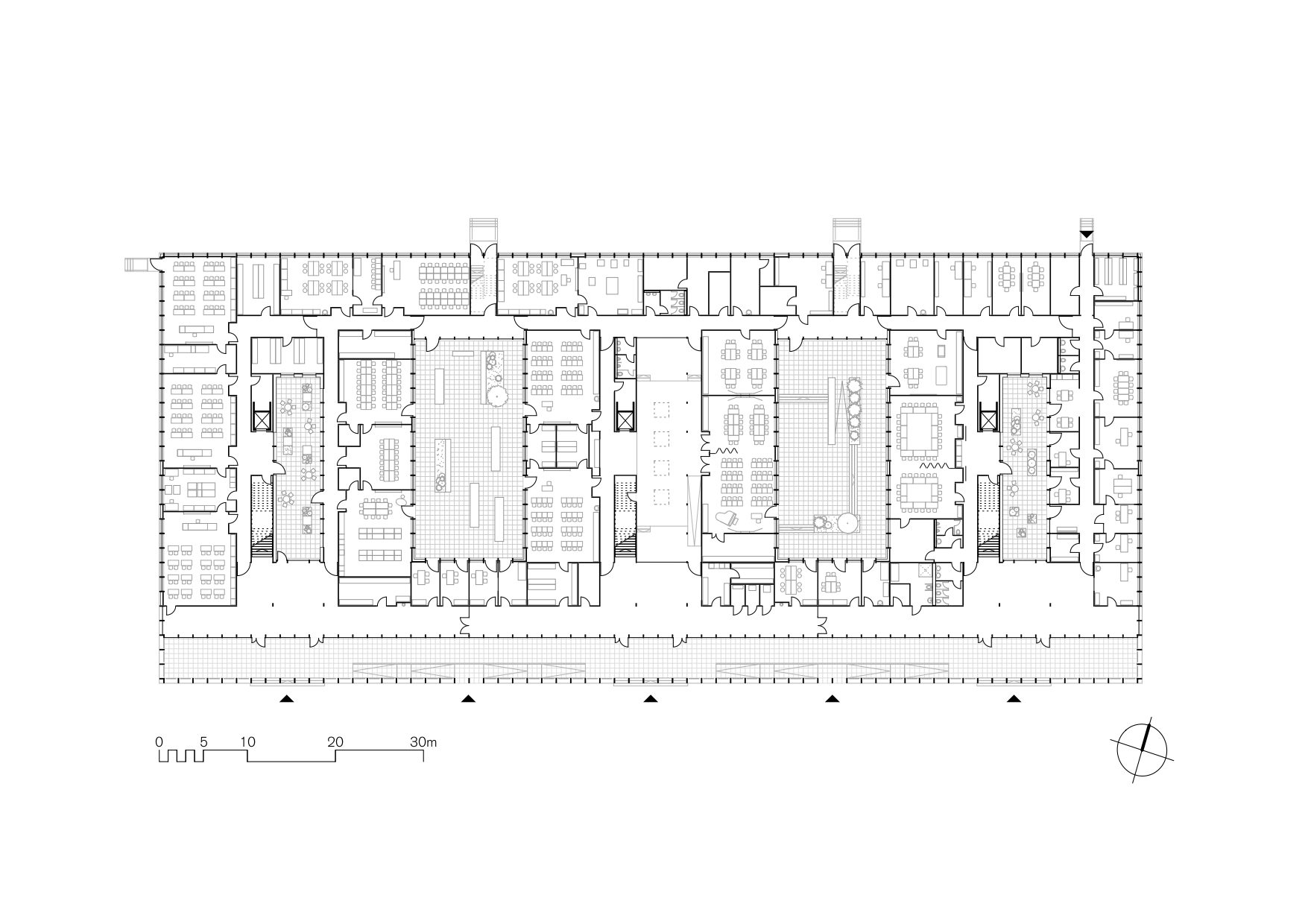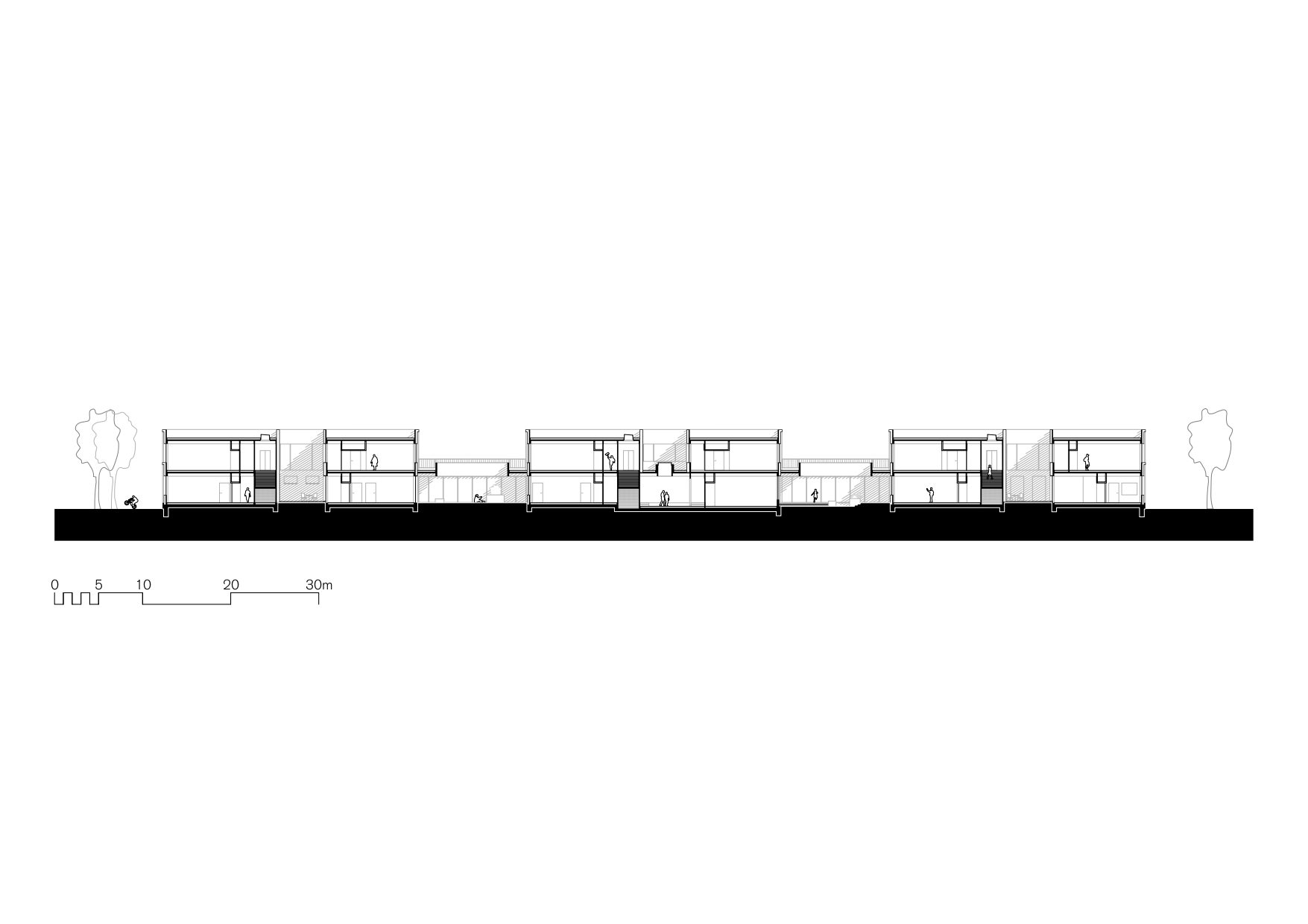Integrated Comprehensive School Rinteln/
Bez+Kock Architekten BDA
Project Details

Location(City/Country):
Rinteln / Germany
Tipology:
Educational
Year (Design/Construction):
2017 / 2021
Area (Net/Gross):
7140 m2 / 9315 m2
Operational Carbon emissions (B6) kgCO2e/m2/y:
-
Embodied Carbon emissions (A1-A3) kgCO2e/m2:
-- Design for disassembly. Facade, structural frame, interior walls, roof and ceilings can be dismantled and reused.
- Wood construction in general, as a sustainable material and decisive for the design concept and room atmosphere.
- Flexible design allows for future rearrangements of the different rooms without involving demolition works.
- Synergies on the entire school campus with regard to the use of large, public spaces such as the library, auditorium, conference rooms and sports facilities as well as science rooms. This meant that less enclosed space was required overall.
- Electricity consumption is covered in its entirety by Photovoltaic panels installed in the roof.
- The district heating is obtained from biogas from a neighbouring farm.
- Night cooling via automated skylight windows and skylight domes.
The site of the Integrated Comprehensive School is located at Burgfeldsweide, south of the city center of Rinteln (Lower Saxony). A simple and geometrically clear structure, designed for a maximum of 900 pupils, complements the ensemble on the school site opposite the existing high school. With its calm, rectangular geometry, the two-story new building formulates an urban counterpoint to the evolved structure of the existing building. Its façade is made of larch wood, which was cut in the client’s own forestry operation.
Facing the schoolyard, the 112 m long school building has an open entrance zone along its entire long side, which serves as a welcome gesture, a covered break area, a communication space and access to the individual learning clusters. This mediating entrance creates a low- threshold access into a bright and friendly school building.
The internal layout of the new building is also clear and simple: three rectangular double clusters sit on a base occupied by subject rooms and administration, which are subdivided and lit via four inner courtyards. Designed as play yards or interior reed gardens, the inner courtyards allow for easy orientation within the building and clear address formation of the individual clusters.
Music and art rooms form the central block of specialized classes on the ground floor, the rather more robust area of workshops is oriented to the west, and the specialized science classes define the back of the building to the north. The administrative area is located close to the bus stops and parking lots, and is thus accessible to parents and teachers by a short route – and yet arranged rather discreetly with respect to school operations.
The ICS was designed to be barrier-free, integrative and sustainable. It is designed as a demountable solid wood building with a timber frame façade, almost all essential structural and building components remain visible in the interior. This makes the timber construction an initial component of the design concept. Pleasant room atmosphere and material haptics are combined with rational production, short construction time and a future-oriented energy concept.
The new building has KfW 55 standard and is supplied with biogas from a nearby plant. The primary energy factor is fp=0.00. With a yield of 176,000 kWh, the photovoltaic system almost completely covers the projected annual electricity consumption of approx. 200,000 kWh. A total of approx. 2,815 m3 of wood and only approx. 2,650 m3 of concrete were used.
Photography: Marcus Ebener










